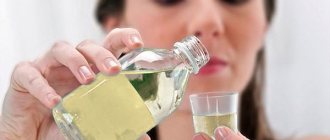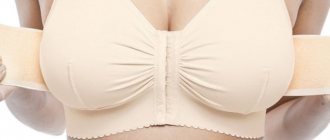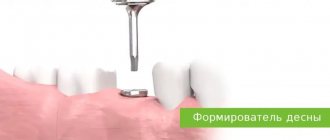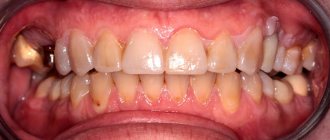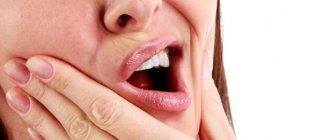Clinic “No Hurt!”
Enlarge
A patient comes to the doctor with caries. Or, during an examination, the doctor discovers caries. Treatment is prescribed. Dental tissue damaged by infection is removed and the tooth geometry is restored using a filling. The nerve of the tooth is not affected during caries treatment and the tooth remains alive. The patient goes home, but the tooth does not allow itself to be forgotten. It hurts to bite. It hurts to chew. Pain occurs when biting, pressing, or pressing on a tooth.
We addressed this topic in the article Tooth hurts after filling. In this publication we will reveal the causes of toothache under a filling after caries treatment.
Pain after caries treatment
Immediately after filling a tooth, pain may occur for the following reasons:
- temperature changes (cold food, hot drinks);
- pressure of the filling on the pulp (if the carious cavity was located very close to the nerve).
Increased sensitivity to cold and hot usually goes away after a couple of days. The pain due to the pressure of the filling on the pulp should disappear within a month, as a protective layer of dentin is produced. If the pain lasts longer than 4 weeks, go to the doctor.
If pain did not occur immediately, but several weeks after filling, then the causes are complications, such as:
- the presence of remains of caries-affected tissue under the filling, which provoked the development of pulpitis;
- crooked filling;
- poor oral hygiene, which caused secondary caries.
Note! Go to the doctor if the pain that occurs after filling lasts longer than a month, and also if the symptom does not appear immediately, but after several weeks.
Pain during implantation, is it painful to install an implant?
For those who were once familiar with the removal of eights (wisdom teeth), they know how unpleasant it is. Implantation is a completely painless operation. The anesthesia is enough to make everything comfortable. The patient feels manipulation in the oral cavity, but there is no pain. Even the injection itself with an anesthetic solution can be made invisible. After treating the puncture site with special means.
There are several types of anesthesia for implantation:
- local
, used in most cases.
It is quite enough for work. An injection is given and within a few minutes the medicine begins to act. Installation of one implant takes 15-30 minutes
, and the effect of anesthesia ends after a few hours; - sedation
_ The patient is half asleep, there are no unpleasant sensations, but there may be consequences; - anesthesia
_ To undergo implantation under anesthesia, you will need to undergo certain tests and consult an anesthesiologist. Coming out of anesthesia takes time. This method is used very rarely, it is not available in all clinics and can be dangerous.
Pain after pulpitis treatment
Pain after treatment usually lasts up to 2 months. The main reason is periodontal injury at the root apex. It cannot be avoided, since the pulp, the neurovascular bundle, was removed and ruptured from the tooth. There is no reason to worry if the pain is not severe and does not significantly impair the quality of life, and also becomes less intense every day. In the second month it is not constant, but appears only when pressure is applied to the tooth.
The following symptoms should alert you:
- pain 2 months after treatment;
- not a decrease, but an increase in pain every day;
- severe pain (it prevents the patient from sleeping and doing everyday activities);
- swelling.
If such signs appear, consult a doctor immediately. They indicate that the nerve was not completely removed. It may also be due to poor quality work by the doctor or due to the individual characteristics of the patient’s tooth structure. Remains of tissue rot and cause inflammation.
How to Reduce or Prevent Pain During Recovery, Do's and Don'ts
In the postoperative period, the main thing is to strictly follow all the doctor’s recommendations. Basic:
- in the first hours after implantation, do not eat or drink;
- the first days (about a week) eat liquid foods: soups, purees, baby food;
- exclude hot, cold, spicy, alcohol;
- After surgery, apply cold compresses to relieve swelling;
- take prescribed medications strictly according to the schedule. Do not cancel them yourself if you feel better;
- make mouth baths using antiseptics: chlorhexidine, chamomile;
- sleep on a high pillow and on the opposite operating side;
- forget about physical activity for a while;
- Going to bathhouses and saunas is prohibited.
Usually, every dental clinic has a reminder about what is possible after implantation, what is prohibited, how to relieve pain after dental implantation, and a schedule for visiting the doctor.
The doctor will definitely prescribe painkillers - Nurofen, Nimesil, Analgin, Nise, etc. They need to be taken as long as the pain lasts after installing the dental implant, up to 7-10 days. If it persists longer, it is better to contact your dentist.
Relief from pain
If this symptom bothers you greatly or is accompanied by edema or swelling, then contact your dentist. Experienced doctors at the Aurora Star clinic will quickly identify the cause of pain and make every effort to eliminate it. Sometimes this requires simply filling the tooth again (for example, if it was underfilled or overfilled). If complications occur, such as periodontitis, then surgical treatment will be required - an incision to remove pus.
Sometimes pain is a natural phenomenon after treatment for dental diseases. But everyone has their own pain threshold. If this symptom bothers you greatly, your doctor will help you choose the appropriate painkillers. At the Aurora Star clinic you can get rid of the consequences of poor-quality dental treatment, and at the same time, pain. Experienced dentists, modern equipment and a pleasant pricing policy await you.
What if the implant gets sick long after surgery?
Peri-implantitis is insidious; it can occur unnoticed. After some time, there will be a sharp or bursting pain, radiating even to the nose, ear, head, face. This indicates inflammation of the tissue around the artificial root. Complaint: the tooth implant hurts; it is incorrect in this case. After all, the implant itself cannot hurt; it is a non-living structure, but the soft tissue around it can. The main thing is not to wait as long as you are willing to endure, but to go to the clinic urgently.
Peri-imlantitis on x-ray
The body is not always ready to accept a foreign object and osseointegrate with it. Rejection is extremely rare - less than 1.5% of cases. But you must always monitor your well-being.
Why does a tooth hurt so much after nerve removal?
Serious complications after depulpation can arise due to a medical error or an unpredictable reaction of the body.
The most popular causes of severe pain after dental nerve removal:
- removal of filling material beyond the root;
- improperly sealed canal;
- a fragment of an instrument remained in the canal;
- root perforation;
- allergy to the filling material.
To avoid errors in treatment, dentistry for nerve removal must be chosen very responsibly. The ART-Dent clinic employs only highly qualified specialists, so the risk of undesirable consequences is minimized.
How to relieve pain
Even mild pain can cause many problems. They are distracting and annoying, so it’s only logical to take steps to eliminate them.
Important: we are talking about pain, which is a consequence of the treatment of deep caries and is not a symptom of complications. You can reduce it and at the same time speed up the tissue healing process in the following ways:
- taking painkillers;
- rinsing the mouth with a soda-saline solution;
- rinsing and bathing with a decoction of sage and chamomile;
- temporary removal of hot and cold foods from the diet;
- refusal of spicy, sour, and also too hard foods;
- avoiding too much stress on the tooth;
- quitting smoking and alcohol.
If the treatment procedure was carried out correctly, the pain will begin to subside on the third day and completely disappear on the fifth day.
Why it hurts to press on a tooth - the main reasons
The causes of pain in a molar, incisor or canine when pressing on it can be very different. Below we will talk about the most common ones.
Increased sensitivity
If unpleasant sensations are associated precisely with this, then they can remind of themselves without any serious reasons. A person simply needs to clench their jaws more tightly to experience discomfort. In such a situation, you should use special toothpastes and remineralizing gels. Pharmacy mouth rinses will also help improve the situation.
If it is not possible to eliminate the manifestations of the pathological condition using standard hygiene products, it is recommended to make an appointment with a dentist. The dentist will treat the teeth with a fluoride-containing strengthening composition, which will improve the situation.
Traumatic injuries (history or recent)
A very common reason. Usually a person who has suffered a jaw injury understands what causes his discomfort. It is important to realize that injuries are not necessarily the result of falls or fights. Sometimes it's enough to eat a handful of nuts or chew crackers to get a problem.
When exposed to mechanical stress, cracks appear on the enamel surface. They are the ones who cause unpleasant dental symptoms. It is not possible to close them on our own. It is imperative to visit a doctor so that he can provide the necessary treatment.
Periodontitis
Complication of advanced caries, injury or poorly performed dental treatment. With it, the periodontium becomes inflamed - a narrow space located between the crown and the socket. The pathology occurs in acute or chronic form.
Therapy for periodontitis must be comprehensive. Need to:
- get rid of the inflammatory focus;
- clean the dental canals and create conditions for the unhindered outflow of exudate;
- administer antibiotic therapy;
- use medicinal baths.
Good dynamics during the disease are provided by UHF to the affected area.
Gum inflammation
Another reason why a tooth hurts when pressed. Here you need to carry out a differential diagnosis - first press on the gum, and then on the crown. If the problem is damage to soft tissues, then a negative symptom will arise precisely when pressing on them.
Treatment for gum inflammation includes:
- carrying out anti-inflammatory baths;
- exclusion of irritating factors that negatively affect the gums;
- carrying out physiotherapeutic procedures, gum massage;
- vitamin therapy;
- mouth rinse;
- oral administration of medications that help to quickly relieve inflammation.
Poor quality dental prosthesis
It is very important that the installed structure exactly matches the characteristics of the patient’s oral cavity . It is unacceptable for artificial units to be higher or lower than those given by nature. This will create unnecessary pressure on antagonistic neighbors.
It also happens that the doctor performed poor-quality root canal treatment before prosthetics. This led to inflammation. Then you will have to remove the prosthesis and re-treat the canals, and then repeat the prosthetics from the very beginning.
Of course, such situations are very unpleasant and leave a lot of negative emotions and experiences in the patient’s memory. That is why it is so important not to go to a clinic where it is cheaper, but to contact experienced doctors who guarantee the impeccability of the final result.
Cyst
They speak of a root cyst when they see a spherical formation filled with liquid contents . It appears after an injury, as a result of infection of the root canals, due to the introduction of infection into the periodontal zone by a non-sterile medical instrument.
It is important to establish the true cause of the cyst and carry out its step-by-step treatment. When the situation returns to normal, pain symptoms will cease to bother you.
Caries
It would seem that it is not difficult to notice caries and understand that it is the cause. But it is not always the case.
If the carious cavity is at the spot stage , it may be completely invisible to a person. The situation is similar if the “hollow” is located between neighboring units.
To understand the root cause of the problem, you need to conduct a dental examination. To reduce the risk of cavities, you should have checkups at your dentist's office every six months.
Pulpitis
A disease that every person faces sooner or later. It affects nerves and blood vessels located in the root system. With pulpitis, painful symptoms occur:
- when pressed;
- when eating cold or hot food;
- when trying to chew something hard.
Treatment is carried out under local anesthesia. The doctor opens the upper part of the crown and puts in the medicine. After the specified period, the patient comes for a follow-up appointment. Then the medicine is removed, the canals are cleaned, expanded and sealed. Finally, a permanent filling is installed.
It is very important not to delay treatment of pulpitis. This disease is very insidious. Among its consequences:
- destruction of bone tissue;
- periostitis;
- periodontitis;
- destruction of the ligaments holding the canine, incisor or molar (this leads to its loosening and premature loss).
After fixing the prosthesis
Sometimes after the prosthetic stage, discomfort (or even pain) occurs in the gum area. The reasons may be:
- a crown that was made incorrectly or was not ground sufficiently;
- fixation of an orthopedic structure that was not completed;
- failure to comply with the instructions of the treating dentist while wearing a temporary prosthesis.
If for some reason discomfort begins to be felt after leaving the dentist (for example, after the anesthesia wears off), you need to see him as soon as possible for correction or proper fixation of the orthopedic structure.
A few months after implantation
The period of complete osseointegration of the implant takes on average from 4 to 6 months. In some cases, severe pain may appear in patients many weeks after implantation of the artificial root (in the middle or late stages of osseointegration).
Causes of pain may include:
- Loosening of temporary structures
. This is either a plug (for two-stage implantation) or an abutment for a temporary crown (for one-stage implantation). This situation is not dangerous, but requires immediate contact with an implantologist to remove, wash and firmly fix the structures in their original place. - Implant failure
. During the period of osseointegration, there is a minimal chance (1%) of rejection of the structure. If detected, it is necessary to remove the implant and choose the same method of restoring the dentition. - Inflammation of the gums
. In the vast majority of cases, it occurs due to non-compliance with the implantologist’s instructions. Immediate contact with your doctor is required (the sooner the better), because inflammatory processes can lead to implant rejection. - Damage to the maxillary sinuses or mandibular nerve
during implantation (to exclude such damage, a thorough examination is carried out).
When is it necessary to urgently consult a dentist?
Although pain and swelling are normal, during the rehabilitation period you need to be especially attentive to your internal sensations. If you notice the following symptoms, you should immediately contact your treating dentist-implantologist:
- constant incessant bleeding from the surgical area;
- temperature from 38°C on the 4th day (or later) after surgery;
- pain that cannot be relieved with analgesics;
- large swelling;
- any pain or discomfort that appears on the 10th day (or later) after implantation;
- the appearance of sharp or aching pain in the later stages of osseointegration or after it.
Diagnosis and treatment
To determine the cause of pain, dentists conduct a visual and instrumental examination of the oral cavity. To confirm the diagnosis you may need:
- overview x-ray of the upper or lower jaw,
- results of a general blood test and a smear from the oral mucosa,
- cytological examination of the contents of periodontal pockets.
The treatment regimen is drawn up individually for each patient, taking into account the diagnosis and clinical picture.





